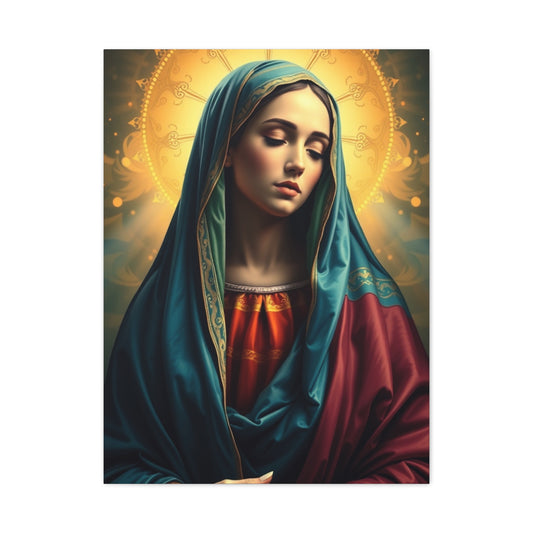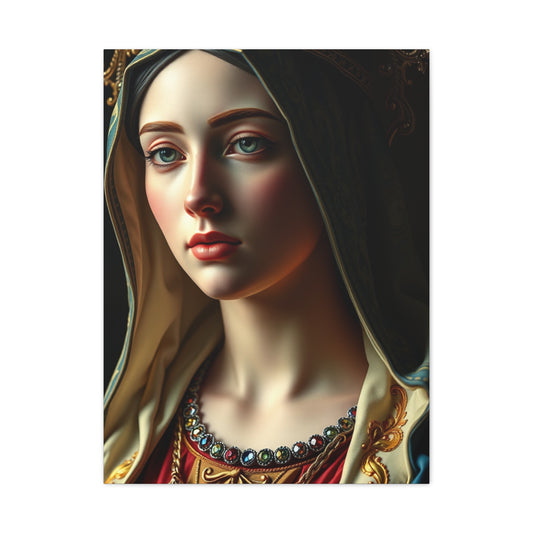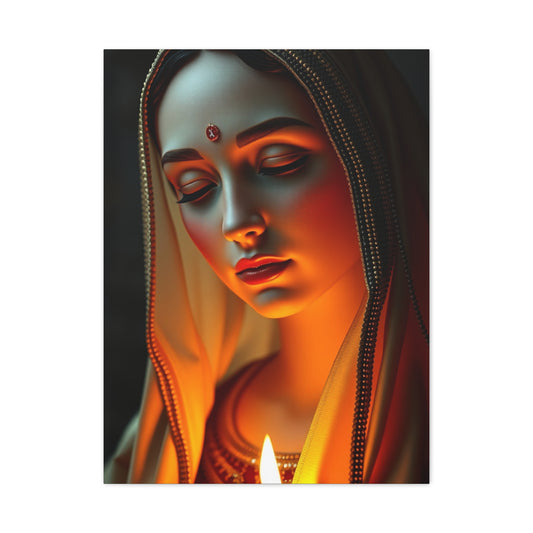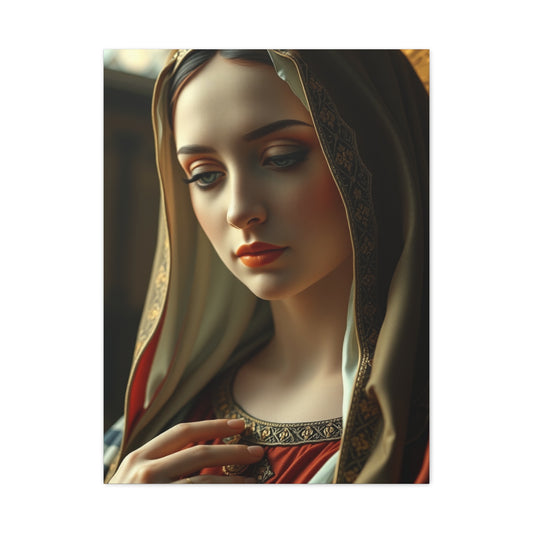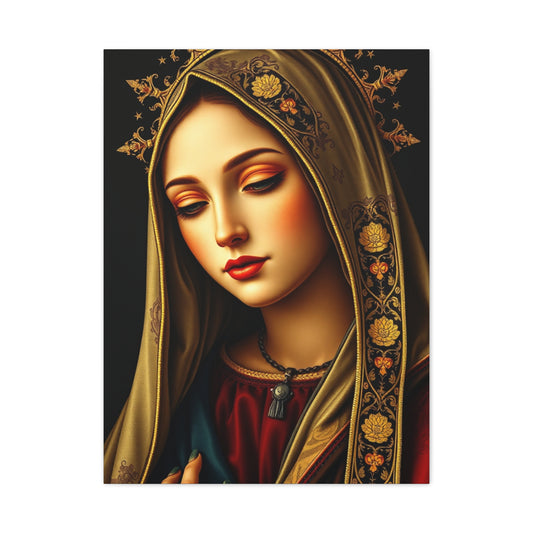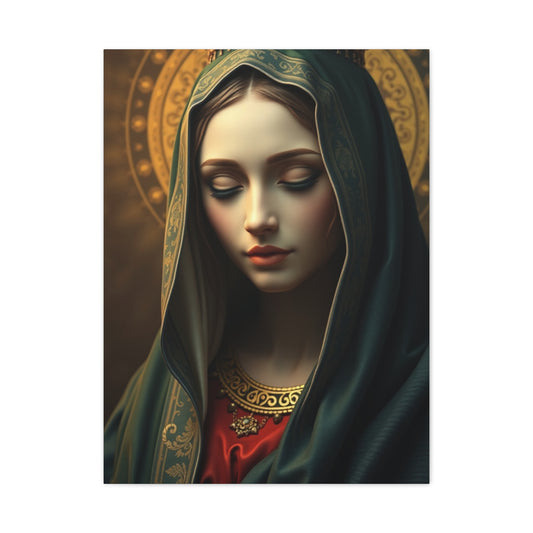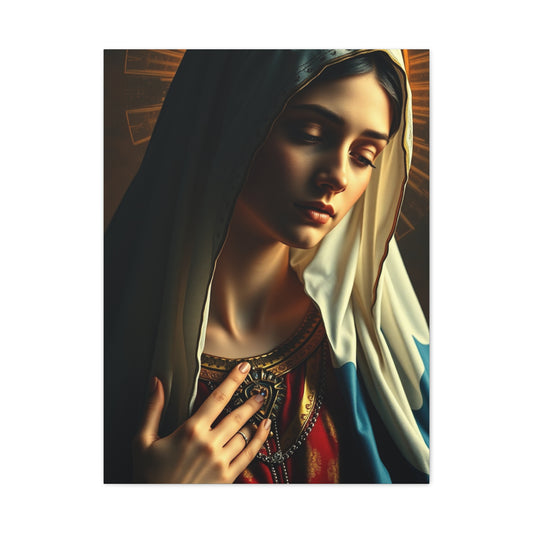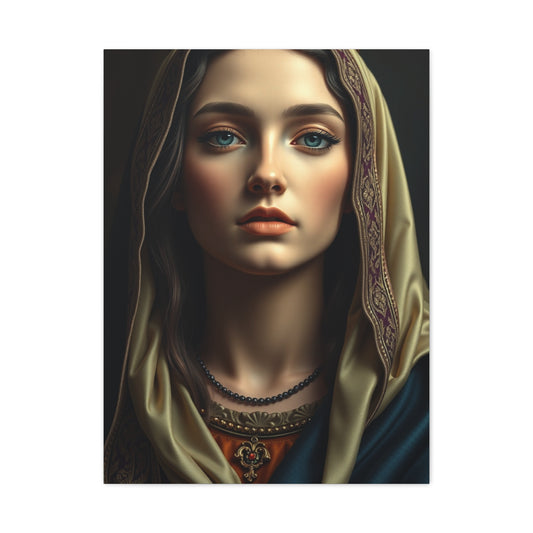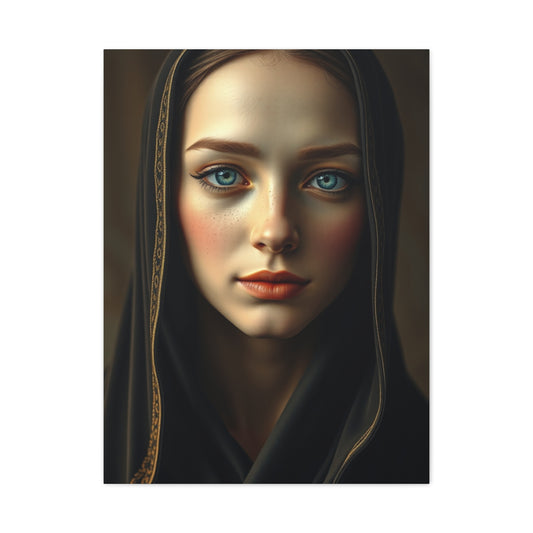The Art of Madonna: A Living Masterpiece
Few cultural figures have shaped the modern landscape of music, film, and visual expression quite like Madonna. Her career has been a constant exercise in transformation, reinvention, and artistic audacity. Over decades, she has been more than just a performer; she has become a muse, an icon, and an endless source of inspiration for painters, illustrators, photographers, and digital creators who channel her magnetic presence into their own work. To speak of Madonna's art is to explore not only portraits and posters but a visual history of one of the most ground breaking figures in entertainment. When a performer reaches a point where her life is translated into framed art pieces, commemorative posters, cinematic stills, and large-scale canvas creations, it reflects her position not merely as a singer but as a living symbol of artistry.
The celebration of her artistry through visual media is not just about capturing her image but about representing her essence. Whether it is a vibrant pop-art style canvas that highlights her boldness or a delicately sketched drawing that emphasizes vulnerability, every artistic rendering of Madonna contributes to the larger narrative of cultural memory. Her impact cannot be measured in songs alone; it is etched into walls, galleries, and private collections around the world, transforming personal admiration into tangible art that transcends time.
Historical Background
Madonna Louise Ciccone was born in Bay City, Michigan, in 1958. Her early life was marked by resilience, curiosity, and an irrepressible drive to explore creative avenues. At a young age, she trained in dance and displayed a strong interest in performance. By the late seventies, she relocated to New York City, a move that would prove pivotal for both her career and her future artistic legacy. The city was a melting pot of styles, a place where underground art, music, and fashion coexisted in chaotic harmony. It was here that Madonna carved her identity, performing in small clubs, working with musicians, and immersing herself in the avant-garde art scene that shaped her early outlook.
When her debut album appeared in 1983, it marked the beginning of an extraordinary journey. Her music not only climbed the charts but also quickly entered popular consciousness with singles like Holiday and Borderline. Yet what set her apart was her instinct to align music with imagery. Every album, every single, and every concert was accompanied by a carefully curated visual identity. Her collaboration with photographers, costume designers, and painters was not a secondary concern but a central part of her artistry. This marriage of sound and sight explains why Madonna's art occupies such a unique place. She wasn’t simply singing songs; she was presenting a living, breathing canvas of reinvention.
By the mid-eighties, she had embraced an aesthetic that combined playful rebellion with high-fashion elegance. Her look in Like a Virgin became a cultural phenomenon, replicated by fans and immortalized in posters, fashion spreads, and sketches. Photographers such as Herb Ritts and Steven Meisel helped define her public image, yet what followed was a creative explosion in which independent artists began to use her as a subject for paintings, collages, and murals. The historical trajectory of Madonna’s career shows a remarkable fusion of popular culture and visual art, with each stage offering fresh material for artists to interpret.
Core Concepts and Foundations
The foundations of Madonna's art lie in the interplay between identity, transformation, and cultural commentary. Few performers have been as willing to push the boundaries of gender norms, religious symbolism, and sexual expression in such a direct way. Each era of her career has provided fertile ground for artistic exploration. Her performance of Like a Prayer, for instance, infused religious iconography with themes of freedom and defiance, sparking intense debates while simultaneously inspiring visual reinterpretations across paintings, photography, and street murals.
One of the core concepts behind the artistic fascination with Madonna is her ability to embody dualities. She is both accessible and untouchable, glamorous yet rebellious, mainstream yet subversive. These contradictions make her a captivating subject for visual representation. Artists are drawn to her because she is never static; she is in constant dialogue with culture, politics, and personal identity. A portrait of Madonna is never just a likeness; it is a commentary on fame, femininity, power, and resilience.
Another foundation of Madonna-inspired art is the recognition of her role as a cultural innovator. By aligning herself with visual artists early in her career, she bridged the gap between pop music and fine art. Her use of imagery has always been intentional. From her Marilyn Monroe-inspired looks in Material Girl to her futuristic cybernetic identity in Ray of Light, she has constructed visual personas that serve as both performance and statement. This visual dimension is what allows her to be so readily translated into wall art, framed posters, and digital reimaginings.
The appeal of Madonna's art also resides in nostalgia. For many, owning a framed Madonna print is not merely decorative but deeply personal. It anchors moments in their lives when her music served as an anthem of liberation, heartbreak, or triumph. The foundations of Madonna-inspired art are therefore not just about aesthetics but about memory and emotion. Each artwork serves as a reminder of how she influenced not only music but also individual journeys of self-expression.
Types and Categories
Madonna's art is diverse, ranging from carefully crafted fine art pieces to playful pop-culture posters. One of the most recognizable forms is framed artwork. These pieces often highlight her most iconic photographs, such as the black-and-white portraits from the 1980s, which capture her blend of innocence and daring. Framed Madonna art is popular in personal collections, music rooms, and even office spaces, reflecting her role as a timeless icon.
Canvas creations offer another category. Artists often experiment with large-scale representations, using bold colors, abstract shapes, and dynamic textures to reinterpret her image. A canvas Madonna piece does not just capture likeness but often incorporates symbolic elements—roses, crucifixes, crowns, or broken glass—to communicate themes associated with her career. These canvases bridge the gap between pop art and personal interpretation, making them a mainstay in both galleries and contemporary homes.
Posters remain one of the most accessible categories of Madonna art. During the peak of her career in the 1980s and 1990s, posters of her album covers, concerts, and films adorned countless bedrooms and dorm walls. They are part of a larger culture of fandom that blends admiration with art collection. Today, vintage Madonna posters are sought after by collectors, while new designs reinterpret her legacy through a modern lens.
Movie posters also hold a unique position within Madonna's art. Films such as Desperately Seeking Susan, Dick Tracy, and Evita not only showcased her versatility but also created lasting visual legacies. Posters from these films capture specific moments in her acting career and continue to be celebrated as artistic relics. Each poster is not only a piece of cinematic history but also a reflection of her multidimensional identity as both a musician and an actress.
Another fascinating category is tribute art created by contemporary artists who admire her influence. Ocean Clark’s Truth or Dare artwork is a striking example, taking inspiration from her bold documentary while translating it into vibrant, colorful visual language. Similarly, artists such as Val Bochkov have created imaginative portrayals that situate Madonna within broader cultural narratives, blending realism with symbolism. These pieces reveal how her presence continues to inspire fresh artistic interpretations long after the release of her music.
Digital art and mixed media works have expanded the possibilities even further. Modern artists use collage techniques, layered photography, and graphic design tools to reinvent her image in styles that merge nostalgia with futurism. This category reflects the ongoing relevance of Madonna in a digital age where art is not confined to traditional media but thrives across screens and social platforms.
Practical Applications
Madonna's art extends beyond mere aesthetic appreciation; it has practical applications in both personal and professional contexts. In private settings, it serves as a way for fans to celebrate her legacy while enhancing interior design. A framed Madonna print in a music room or bedroom transforms the space into a sanctuary of inspiration. It not only provides a visual focal point but also sparks conversation, reminding visitors of her cultural impact.
In creative industries, Madonna's art plays a role in setting atmospheres for studios, galleries, and performance spaces. Her imagery evokes themes of reinvention, boldness, and creativity, making it ideal for environments where innovation is celebrated. Interior designers often use Madonna artwork as a statement piece in modern living rooms, lofts, or offices, blending her timeless persona with contemporary décor.
Collectors find Madonna artwork appealing not only for personal admiration but also as investment pieces. Vintage posters, limited-edition prints, and signed photographs hold significant value in the art market. Their worth grows as her legacy continues to expand, making them coveted by both fans and serious art collectors.
Educationally, Madonna's art provides a rich avenue for exploring themes of gender, identity, and media studies. Students of art history, cultural studies, and media often analyze her imagery as part of discussions on postmodernism, consumerism, and the power of iconography. Her collaboration with renowned photographers and artists further situates her within academic conversations about the fusion of popular culture and fine art.
In the digital sphere, Madonna-inspired creations fuel communities of fans and creators. Artists share their work on social media, gaining visibility and recognition, while expanding the reach of their visual influence. This circulation of Madonna art strengthens her role as a muse, keeping her image alive for new generations who may encounter her through a striking poster or digital collage before discovering her music.
Ultimately, the practical applications of Madonna's art highlight its significance not just as decoration but as a living dialogue between fan, artist, and icon. It underscores the truth that Madonna’s presence is too expansive to be confined to records or films alone. Her influence spills into homes, studios, galleries, and digital landscapes, shaping the way people connect with her and with culture itself.
Techniques and Methods
The creation of Madonna art requires more than a passing fascination with the singer’s image. Artists who choose her as their subject must balance technical execution with symbolic depth. One of the most common techniques involves portraiture, where the focus rests on capturing her iconic expressions, clothing, and stage personas. Traditional mediums such as oil on canvas, watercolor, and charcoal sketching remain popular for their ability to convey depth, texture, and mood. A carefully layered oil painting, for instance, can highlight the duality of strength and vulnerability that often radiates from Madonna’s presence.
Mixed media methods are equally significant. Artists frequently combine photography, paint, and collage to reflect the multiplicity of Madonna’s career. A photograph from her early years may be fused with digital textures, glittering embellishments, and abstract brush strokes to create a dynamic visual that transcends mere likeness. This layering technique mirrors her own approach to music and image, where she consistently fused genres, styles, and cultural references to forge something new.
Another vital method is digital art. With advancements in design software, artists can now create reimagined portraits of Madonna that blend realism with fantasy. Digital techniques allow for experimentation with light, composition, and color that might be impossible with traditional media. For example, artists may place Madonna in futuristic landscapes, merge her features with celestial motifs, or design psychedelic reinterpretations that emphasize her chameleon-like adaptability.
Sculptural methods also occupy a niche but powerful space within Madonna art. Busts, figurines, and even large-scale installations are crafted to celebrate her presence. Materials such as resin, bronze, and mixed metals have been used to mold her likeness, offering three-dimensional tributes that emphasize her statuesque aura. Street artists, too, have developed unique techniques, using spray paint, stencils, and murals to capture her spirit in public spaces. These urban representations often appear in cities known for vibrant art cultures, transforming walls into monumental odes to her influence.
The techniques extend into photography as well, particularly in the way professional photographers and fans reinterpret her look. High-contrast black-and-white portraits emphasize her intensity, while saturated color photography highlights her flamboyant energy. Each method serves a different purpose, whether to underline her power, her sensuality, or her enduring rebellious streak. Ultimately, the diversity of techniques employed reflects the endless possibilities of Madonna as a subject, where no single approach can encapsulate her fully.
Challenges and Common Mistakes
While the appeal of Madonna's art is undeniable, creating pieces that honor her essence comes with challenges. One of the foremost difficulties lies in avoiding superficial imitation. Madonna’s image is instantly recognizable, but to capture her spirit requires more than reproducing facial features. A common mistake among novice artists is focusing too much on likeness without considering the emotional or symbolic layers that define her. A technically accurate portrait that lacks intensity may feel hollow compared to one that embraces her energy and boldness.
Another challenge is navigating the balance between reinvention and respect. Madonna herself thrives on transformation, often shedding old identities to embrace new ones. Artists who attempt to depict her may struggle with choosing which era or persona to highlight. Should the focus be on the rebellious Like a Virgin period, the glamour of Vogue, the spiritual ambiance of Ray of Light, or the futuristic tones of later years? Selecting just one stage risks flattening her complexity, while combining too many without coherence risks visual chaos.
Color usage presents another area where mistakes can occur. Madonna’s image has often been associated with bold, daring palettes, from vibrant reds to deep blacks and metallic silvers. Overuse of bright tones, however, can reduce sophistication and turn a tribute into something garish. Skilled artists must strike the right balance, using color strategically to evoke mood and highlight symbolism without overwhelming the composition.
Symbolism itself is a delicate terrain. Madonna’s career is rich with provocative imagery, from crosses and veils to crowns and broken chains. Misusing or overloading artwork with these symbols can dilute their meaning. For instance, incorporating religious iconography without sensitivity may lead to controversy or appear exploitative rather than insightful. A successful piece must employ symbols in ways that echo her artistry while also offering original interpretation.
Technical challenges also arise with proportion and composition, particularly in artworks that emphasize her dynamic stage movements. Madonna is not simply a static subject; she is defined by movement, energy, and expression. Capturing that liveliness in still form requires mastery of gesture and composition. Inadequate rendering of body posture or facial emotion can result in a portrayal that feels lifeless, which undermines the essence of her persona.
Finally, another common mistake is underestimating the audience’s connection to her. Madonna fans are deeply invested, often noticing even the smallest details. Art that feels insincere or careless can be quickly dismissed. Artists, therefore, must approach her as more than a celebrity; they must engage with her as a cultural force whose image demands both respect and daring interpretation.
Trends and Future Outlook
The evolution of Madonna's art reflects broader shifts in visual culture. In earlier decades, posters and framed photographs dominated, often sold as memorabilia alongside albums and concert tickets. These works were celebratory, intended primarily for fan collections. However, in recent years, a significant trend has emerged toward reinterpretation and fine art integration. Galleries now exhibit Madonna-inspired works not just as fan tributes but as serious contributions to contemporary art discourse.
One noticeable trend is the resurgence of pop-art styles. Inspired by Andy Warhol’s iconic representations of celebrities, many contemporary artists use bold colors, repetitive patterns, and stylized designs to present Madonna as a symbol of consumer culture, fame, and power. This approach situates her alongside other pop culture icons while emphasizing her longevity in a constantly shifting industry.
Street art has also become a key trend. Murals of Madonna have appeared in cities across Europe, North America, and South America, often painted to commemorate her tours or significant anniversaries. These large-scale pieces transform urban landscapes into galleries, making her presence accessible to the public. The raw, rebellious nature of street art aligns perfectly with Madonna’s reputation for breaking boundaries, ensuring this trend remains strong in the future.
Another trend is digital reinterpretation. With social media and design platforms, digital artists are creating new visions of Madonna daily. These works often blend nostalgia with futurism, portraying her through surreal collages, AI-assisted portraits, and 3D renderings. As technology evolves, digital Madonna art is likely to become increasingly interactive, potentially integrating augmented reality, where viewers can experience her image in immersive ways.
The future outlook also suggests growing academic interest in Madonna art. Universities and art institutions are beginning to explore her as a subject of study, examining how her imagery intersects with feminism, postmodernism, and global cultural exchange. This scholarly focus will ensure that her artistic influence continues to be reinterpreted for future generations, inspiring new waves of artwork that position her not just as a pop icon but as a subject worthy of intellectual analysis.
Sustainability in art production is another factor shaping future directions. Eco-conscious artists may explore creating Madonna-inspired works using recycled materials, biodegradable canvases, or digital-only outputs that minimize environmental impact. This approach not only aligns with contemporary values but also reimagines her influence within the context of global responsibility.
Ultimately, the future of Madonna's art lies in its ability to evolve alongside both cultural shifts and technological innovations. Just as Madonna herself has never remained static, the art inspired by her is destined to move forward, adapting to new mediums while keeping alive the essence of reinvention and expression.
Expert Insights
To fully appreciate Madonna's art, one must listen to the voices of experts who have studied, created, or exhibited works inspired by her. Curators often describe her as a muse who bridges the gap between popular culture and fine art. Unlike many other celebrities, her deliberate use of image and symbolism places her squarely within conversations about postmodern art. She is seen not just as a performer but as a collaborator in shaping visual narratives that resonate across decades.
Artists themselves frequently remark on the challenge and thrill of using Madonna as a subject. Painters speak about her dynamic facial features, which shift dramatically depending on mood and era, offering endless possibilities for interpretation. Photographers admire her ability to embody characters, noting that even candid shots often feel like carefully crafted portraits. Digital creators highlight her timelessness, emphasizing how her image adapts seamlessly into futuristic or surreal settings without losing authenticity.
Academics contribute another layer of insight. Cultural theorists analyze how Madonna's art reflects societal changes in attitudes toward gender, sexuality, and fame. They argue that her visual legacy cannot be separated from the dialogues she sparked in media and politics. Every artwork that depicts her is, in some way, participating in those larger conversations, whether intentionally or not.
Collectors provide a practical perspective. They note that Madonna-inspired works have gained increasing value in art markets, not only because of her fame but because of the craftsmanship and creativity behind each piece. For collectors, investing in Madonna art is both a celebration of her legacy and a recognition of the broader cultural relevance these works hold.
Lastly, fans themselves, though not always considered experts in traditional terms, offer invaluable insight. They approach Madonna's art with emotional investment, often seeing in it reflections of their own journeys. To them, a framed Madonna poster is more than decoration; it is a talisman of empowerment, a reminder of resilience, or a marker of an era in their personal history. Their voices demonstrate that Madonna's art is not confined to galleries or academia but lives vibrantly in homes and communities.
Expert perspectives converge on one point: Madonna’s image will remain an inexhaustible source of artistic inspiration. Whether in canvas paintings, digital montages, or urban murals, she represents an enduring challenge and opportunity for creativity. Her art-inspired legacy continues to expand, confirming that she is not only a musical trailblazer but also one of the most visually influential icons in modern history.
Understanding the Evolution of Wall Art
To truly explore emerging trends in wall art, it is important to begin with an understanding of how visual expression on walls has transformed across time. Historically, wall art was confined to frescoes, murals, and handcrafted panels that carried religious or cultural messages. Over centuries, as domestic and commercial spaces became more personalized, wall art evolved into framed paintings, tapestries, and decorative motifs. In contemporary settings, it is no longer viewed merely as an embellishment but as an essential part of identity, storytelling, and atmosphere.
Today’s emerging trends emphasize fluidity, technology, and personalization. The shift reflects a broader cultural desire to connect with art not just as static imagery but as interactive, adaptive, and meaningful experiences. This evolution requires us to think of wall art not as a fixed object but as a living dialogue between artist, viewer, and space. By recognizing this historical continuum, one can better appreciate the innovative practices reshaping modern interiors.
Identifying Personal Aesthetics
The first step in engaging with modern wall art is identifying personal aesthetics. This process begins with introspection, asking what emotions, themes, or cultural references resonate most deeply. Some may be drawn to minimalist compositions that emphasize tranquility, while others find meaning in maximalist expressions bursting with color and detail. The choice between abstract, figurative, surrealist, or conceptual forms becomes a way of shaping the overall character of a room.
A key trend within this step is the integration of cultural storytelling. Individuals increasingly select wall art that reflects heritage, personal milestones, or global influences. For example, geometric patterns inspired by Middle Eastern motifs or botanical illustrations rooted in indigenous traditions can serve as profound statements. This shift illustrates how wall art is becoming a medium for authenticity, where each piece represents both personal taste and cultural connection.
By identifying aesthetic inclinations early, one creates a foundation for exploring current trends without being overwhelmed by the sheer diversity of options. It ensures that the eventual selection is not simply fashionable but personally significant.
Exploring Material Innovations
Once personal preferences are clear, the next step involves examining the materials that dominate emerging wall art. Traditional oil paints and canvases continue to hold value, but innovations in texture and medium have expanded possibilities dramatically. Artists now experiment with mixed media, resin, metalwork, and recycled materials to create unique pieces that emphasize tactile interaction.
One trend gaining momentum is the use of natural elements in wall art. Pieces incorporating wood, stone, or clay offer not only visual beauty but also a sense of organic connection to the environment. Similarly, metallic wall sculptures and aluminum prints reflect modern industrial sensibilities while adding depth through reflective surfaces. The tactile dimension of these materials challenges the viewer to experience art not just visually but physically.
Digital printing technologies have also transformed accessibility. High-definition printing allows for intricate reproductions on unconventional surfaces such as glass, acrylic, and fabric. These innovations democratize wall art, making it easier for people to own works that were once limited to gallery spaces. As materials continue to diversify, the trend moves toward blending traditional craftsmanship with futuristic processes, creating hybrid forms of expression.
Integrating Technology with Wall Art
A defining trend in recent years is the integration of technology into wall art. Digital installations, projection mapping, and interactive LED panels are pushing the boundaries of what it means to decorate a wall. Unlike traditional artworks that remain fixed, these technological approaches adapt to moods, seasons, and even viewer interaction.
Projection-based wall art, for instance, transforms blank spaces into dynamic landscapes that change over time. Homeowners can project shifting visuals that evolve with music, weather, or calendar events, blurring the line between décor and performance. Similarly, LED-based art pieces allow color palettes to shift, offering a customizable ambiance at the touch of a button.
Augmented reality also plays a role in this evolution. Many emerging artists are creating wall art that comes alive through mobile devices, revealing hidden layers, animations, or stories when scanned. This trend expands engagement beyond surface appearance, transforming walls into portals of interaction.
By integrating technology, wall art adapts to contemporary lifestyles that value flexibility, personalization, and immersive experiences. This step highlights how innovation is redefining the very essence of interior expression.
Sustainability and Conscious Choices
Sustainability has emerged as a central principle in modern wall art. Increasing awareness of environmental issues has inspired artists and consumers to seek eco-friendly approaches. This trend manifests in the use of recycled materials, plant-based pigments, and biodegradable canvases that reduce ecological footprints while retaining artistic quality.
The rise of upcycled art demonstrates how sustainability can coexist with creativity. Discarded wood panels, repurposed metals, and even fragments of glass are transformed into striking compositions that embody both environmental responsibility and aesthetic value. For many, these pieces carry symbolic weight, reminding viewers of resilience and regeneration.
Sustainability also influences purchasing behavior. Collectors and homeowners increasingly inquire about the sourcing of materials and the ethical practices of artists. This awareness creates a ripple effect, encouraging entire industries to align with the values of responsibility. By choosing sustainable wall art, individuals participate in a global movement that balances artistic passion with ecological mindfulness.
Balancing Tradition with Innovation
One of the most compelling aspects of emerging wall art trends is the tension between tradition and innovation. While digital installations and futuristic designs capture attention, there remains a strong reverence for classical approaches. Murals, hand-painted frescos, and textile art continue to flourish, often blending seamlessly with modern techniques.
For example, contemporary muralists may employ spray paints alongside digital projectors to achieve layered effects, while textile artists use traditional weaving patterns enhanced with metallic threads or luminous fibers. This hybrid approach honors cultural heritage while pushing creativity into uncharted territories.
Balancing these elements requires discernment. Too much reliance on tradition can appear stagnant, while overemphasis on novelty may feel fleeting. The most compelling wall art today exists in this equilibrium, where timeless craftsmanship meets experimental curiosity, creating pieces that resonate across generations.
The Role of Scale and Space
When integrating emerging wall art trends, scale becomes a critical consideration. The size of a piece dramatically affects how it interacts with its environment. Large-scale artworks, such as expansive murals or oversized canvases, dominate spaces and create immersive experiences. They transform walls into focal points, commanding attention and shaping the overall mood of a room.
Conversely, smaller pieces arranged thoughtfully can create intimate narratives. A collection of framed artworks, when curated with harmony, tells a story that evolves across a wall. This method emphasizes detail, allowing viewers to engage closely with each element.
Current trends suggest a growing appreciation for adaptability. Modular wall art, consisting of panels that can be rearranged, reflects the fluid lifestyles of contemporary society. It allows individuals to alter their space without entirely replacing artwork, keeping interiors dynamic.
Ultimately, considering scale and spatial context ensures that wall art is not just decorative but fully integrated into the architectural and emotional character of its surroundings.
Emotional and Psychological Impact
Emerging wall art trends also emphasize the psychological impact of visual design. Studies in environmental psychology highlight how colors, shapes, and imagery influence mood, productivity, and well-being. Wall art today is often selected not only for aesthetic appeal but also for its ability to foster calm, energy, or inspiration.
Abstract pieces with flowing lines and muted tones may encourage tranquility in bedrooms or meditation spaces, while vibrant geometric patterns stimulate creativity in work environments. Personal portraits or symbolic imagery, meanwhile, provide grounding and a sense of identity, reminding viewers of values and aspirations.
The emotional resonance of wall art is especially relevant in a world where individuals seek refuge from external pressures. By thoughtfully choosing works that align with desired moods, one can transform interiors into sanctuaries of balance and renewal. This psychological dimension underlines why emerging trends prioritize personalization and emotional connection as much as visual innovation.
Global Influences and Cultural Exchange
A defining characteristic of current wall art trends is the celebration of global influences. Artists draw inspiration from diverse cultural traditions, blending motifs, symbols, and techniques across borders. This cultural exchange results in hybrid styles that reflect a globalized yet deeply personal aesthetic.
For instance, Japanese minimalism finds harmony with Scandinavian simplicity in clean, understated wall art designs. African tribal patterns are reimagined in contemporary palettes, while Latin American vibrancy infuses abstract compositions with rhythmic energy. This cross-pollination reflects not only artistic curiosity but also a shared human desire to connect through creative expression.
The future of wall art will likely see even greater fusion, with virtual platforms allowing artists from different continents to collaborate in real time. This interconnectedness ensures that emerging trends are not isolated but part of a global dialogue where traditions evolve into universal visual languages.
Practical Steps for Incorporating Trends
For those eager to embrace emerging wall art trends in personal or professional spaces, a step-by-step approach can simplify the process. First, assess the mood and function of the space, determining whether it requires energy, serenity, or sophistication. Next, explore materials and styles that align with these goals, from sustainable mixed media to interactive digital installations.
Experimentation plays a vital role. Begin with smaller pieces or temporary installations to gauge resonance before committing to large-scale investments. Consider lighting, as it profoundly affects how the artwork is perceived. A well-placed spotlight can transform textures and amplify emotional impact.
Finally, remain open to evolution. Wall art is no longer static; it is part of a living environment that changes as tastes, technologies, and cultural influences shift. By adopting a flexible mindset, one ensures that interior spaces remain fresh, dynamic, and reflective of both personal growth and broader artistic movements.
Future Outlook for Wall Art Trends
The trajectory of wall art suggests an exciting future where innovation and authenticity converge. As technology continues to evolve, walls may become interactive canvases, shifting visuals in response to voice, gesture, or emotion. Simultaneously, there will be continued reverence for traditional forms that connect us to heritage and history.
The future will also amplify sustainability, with eco-conscious practices becoming the norm rather than the exception. Art will increasingly reflect social responsibility, transforming walls into platforms for dialogue on global issues. Additionally, customization will reach new levels, allowing individuals to co-create works with artists or design unique pieces through collaborative platforms.
Wall art will remain at the intersection of personal expression and cultural commentary. It will not merely decorate but provoke thought, inspire action, and offer solace. The trends we see emerging today are the foundation of a future where walls themselves become narratives, telling stories that extend beyond the boundaries of space into the shared human experience.
The Interplay of Art and Identity
Wall art has always been more than simple decoration; it is a mirror reflecting identity, values, and aspirations. In the context of contemporary interiors, wall art serves as a visual autobiography, telling stories about the people who inhabit the space. A portrait hung above a fireplace, an abstract mural stretching across a living room wall, or a series of cultural prints arranged in a hallway all function as silent narrators. They articulate who we are, what we believe in, and how we wish to be perceived.
This interplay between art and identity is becoming more nuanced as trends shift. Individuals now seek pieces that align with their worldview rather than merely filling empty walls. Themes of empowerment, resilience, heritage, and innovation dominate selections, and many artists consciously create works that resonate with these sentiments. The act of choosing wall art is no longer about ornamentation but about curating an interior landscape that aligns with personal narratives. In doing so, art evolves into a profound dialogue between self-expression and spatial design.
Wall Art in Public and Private Realms
The conversation surrounding wall art cannot be confined to private residences. Public spaces also embrace emerging artistic trends, using walls as platforms for collective engagement. Murals in city squares, installations in corporate offices, and curated galleries within educational institutions all underscore the significance of wall art in shaping shared environments.
In public settings, wall art often carries messages of solidarity, cultural pride, or social critique. Street murals, for example, become powerful forms of activism, transforming brick facades into canvases of protest or hope. In corporate environments, carefully chosen pieces reflect brand identity, values, and aspirations, demonstrating how art can be a strategic tool for communication.
In contrast, private spaces emphasize intimacy and personal resonance. Here, the selection process revolves around emotional connections rather than broad messages. A family portrait, a cherished poster, or a canvas reflecting a favorite landscape might dominate, each piece transforming walls into repositories of memory. The distinction between public and private wall art underscores its dual capacity: to serve both collective discourse and individual storytelling.
Cross-Disciplinary Collaboration
A defining feature of emerging wall art is the rise of cross-disciplinary collaboration. Painters now work alongside digital designers, sculptors collaborate with architects, and muralists engage with sound artists to produce multisensory experiences. These collaborations expand the definition of wall art, making it not just a visual expression but an integrated performance of various creative forms.
Consider the case of immersive installations that blend projected visuals, ambient soundscapes, and tactile surfaces. Such projects challenge traditional notions of art as passive, inviting viewers to interact with their environment. By merging disciplines, artists create works that exist at the intersection of sight, sound, and touch.
These collaborations also highlight the growing fluidity between high art and popular culture. Musicians, fashion designers, and filmmakers contribute to wall art movements, weaving their aesthetics into physical spaces. The outcome is a democratization of art, where boundaries between disciplines blur, allowing for dynamic reinvention and broader audience engagement.
The Economics of Wall Art
Another important dimension to consider is the economic landscape surrounding wall art. For centuries, art markets thrived on exclusivity, with only elites accessing masterpieces. Today, accessibility has broadened considerably. Reproductions, limited-edition prints, and digital platforms have transformed ownership, enabling enthusiasts at all levels to bring wall art into their lives.
Online marketplaces and virtual galleries allow collectors to discover global talent without geographical limitations. This accessibility fuels diversity, giving emerging artists opportunities to showcase their work and reach audiences they may never have encountered otherwise. However, it also creates challenges in discerning authenticity, value, and originality amid mass availability.
On the higher end of the spectrum, investment in wall art continues to grow. Collectors regard certain pieces not just as aesthetic treasures but as financial assets. Vintage posters, historically significant murals, and rare canvas creations often appreciate, linking art ownership to economic strategy. In this context, wall art is both an emotional and a fiscal commitment, intertwining beauty with long-term worth.
Education and Wall Art Appreciation
The appreciation of wall art is not only an instinctive response but also a learned skill. Education plays a crucial role in helping audiences understand visual languages, interpret symbolism, and recognize artistic craftsmanship. Schools and universities now incorporate wall art into curricula, analyzing it through lenses of history, psychology, and cultural studies.
Workshops and community programs also cultivate appreciation. Children learn to create murals that reflect local heritage, while adults engage in discussions about symbolism, technique, and impact. This shared educational approach elevates wall art from simple adornment to a profound cultural practice.
In professional fields, design education increasingly emphasizes the integration of wall art into architectural planning. Students of interior design, for instance, are taught to view walls not as static boundaries but as opportunities for visual storytelling. This shift ensures that future generations continue to push boundaries, experimenting with new ways of blending art into everyday life.
The Emotional Weight of Memory
Wall art carries an emotional weight that extends beyond its visual presence. It often becomes a vessel of memory, preserving moments that might otherwise fade. A poster from a first concert, a canvas purchased during a journey abroad, or a mural commissioned to honor community heritage all embody layers of meaning. These memories fuse with physical space, turning walls into archives of lived experience.
The relationship between art and memory also explains why certain pieces remain irreplaceable. Even as trends shift, individuals hold onto specific works because they represent more than style; they represent milestones, relationships, or personal transformations. In this way, wall art is less ephemeral than it might appear. It functions as both a marker of time and a keeper of stories.
The Spiritual and Symbolic Dimension
Emerging wall art trends also reveal a heightened focus on spiritual and symbolic dimensions. Many individuals seek works that evoke transcendence, mindfulness, or deeper reflection. Mandala-inspired pieces, abstract interpretations of natural phenomena, or symbolic imagery such as wings, doors, and light pathways are increasingly popular.
These works invite contemplation, turning walls into meditative portals. Their role extends beyond decoration, offering moments of serenity in fast-paced lives. This symbolic layer demonstrates how wall art engages not just with visual aesthetics but with emotional and spiritual needs, serving as both anchor and inspiration within contemporary spaces.
Challenges in Curating Emerging Trends
While emerging wall art trends offer boundless possibilities, challenges remain in curating them effectively. One challenge is oversaturation, where an abundance of styles and media overwhelms choices. Individuals often struggle to navigate between authenticity and trend-following, risking decisions that may feel fleeting rather than enduring.
Another challenge involves spatial coherence. Integrating large-scale murals or interactive installations into small spaces requires careful planning. Without sensitivity to proportion and harmony, even the most innovative works may disrupt rather than elevate interiors.
Finally, accessibility remains uneven. While digital platforms have expanded reach, not all communities have equal access to high-quality art or opportunities to engage with emerging trends. Addressing these challenges requires collaboration between artists, institutions, and audiences to ensure inclusivity and sustainability in wall art’s future.
A Vision for the Future
Looking ahead, wall art will continue to evolve as both a personal expression and a global dialogue. Future innovations will likely emphasize interactivity, sustainability, and inclusivity. Walls will become adaptive surfaces that respond to voice, movement, and emotion, turning interiors into dynamic canvases. At the same time, traditional practices will retain importance, grounding innovations in craftsmanship and heritage.
The future vision also involves expanding community engagement. Public murals will continue to serve as canvases of solidarity, while digital collaborations will allow global audiences to co-create works in real time. Walls will cease to be passive boundaries and instead become living storytellers, embodying the aspirations of humanity itself.
Conclusion
The exploration of emerging wall art trends reveals not just shifts in style but transformations in meaning, purpose, and experience. From private sanctuaries to public squares, wall art has emerged as a powerful medium of expression that transcends decoration. It embodies identity, provokes thought, sustains memory, and inspires change.
The journey through techniques, challenges, trends, and cultural impacts demonstrates the vast scope of wall art as a practice. It is a mirror of society’s evolution, reflecting both our heritage and our future. Each piece, whether a digital projection, a framed canvas, or a sprawling mural, contributes to a collective narrative that binds individuals to communities and generations to history.
As we stand on the threshold of new artistic horizons, the role of wall art becomes even more vital. It is no longer confined to static representation but evolves into an active participant in shaping how we experience space, identity, and emotion. The walls around us, once silent and bare, are now imbued with voices, stories, and visions.
Ultimately, the conclusion to this journey is not an ending but an invitation. An invitation to see walls not as limits but as opportunities, to embrace emerging trends not as fleeting fashions but as enduring possibilities for expression, and to recognize wall art as a testament to creativity’s infinite capacity to transform lives.

